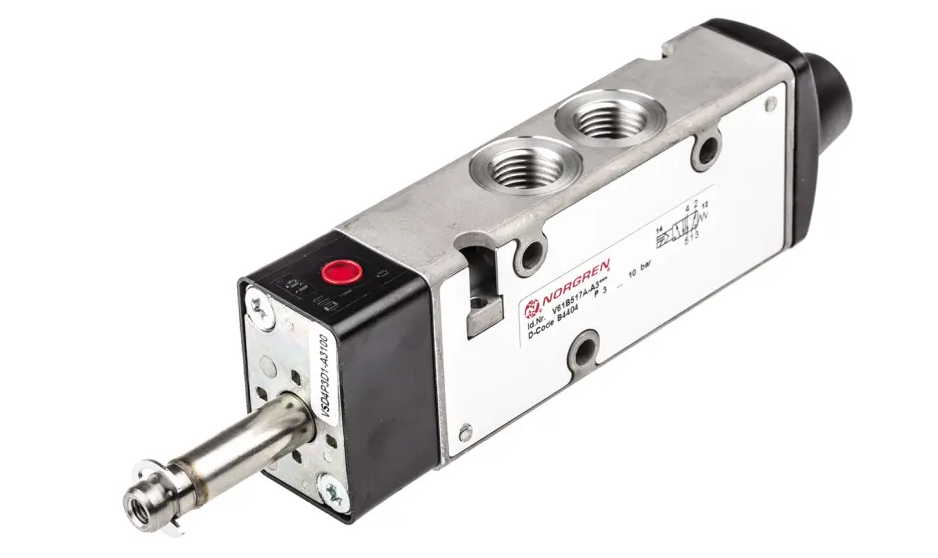
Explained: What is the difference between different solenoid valves?
Solenoid valves are electromechanically operated devices used to control the flow of fluids or gases in a system. The numbers in the valve’s designation, such as 2/2, 3/2, or 5/2, refer to the number of ports and positions the valve has. Here’s a breakdown of the differences between these three types of solenoid valves:
- 2/2 Solenoid Valve: A 2/2 solenoid valve, also known as a two-way valve, has two ports and two positions. The two positions are typically referred to as “Normally Closed” (NC) and “Normally Open” (NO). In the de-energized state (no electrical power applied), the valve is in the NC position, where the flow path between the two ports is closed. When the solenoid coil is energized, the valve switches to the NO position, opening the flow path and allowing fluid or gas to pass through.
- 3/2 Solenoid Valve: A 3/2 solenoid valve, also known as a three-way valve, has three ports and two positions. It provides a choice between two outlet ports for the fluid or gas flow. One port is designated as the “Common” port, while the other two are the “Normally Closed” and “Normally Open” ports. In the de-energized state, the common port is connected to the normally closed port, blocking flow to the normally open port. When the solenoid coil is energized, the valve switches positions, connecting the common port to the normally open port and closing the flow path to the normally closed port.
- 5/2 Solenoid Valve: A 5/2 solenoid valve, also known as a five-way valve, has five ports and two positions. It is commonly used in pneumatic systems for controlling double-acting cylinders, where compressed air is used to actuate the cylinder in both directions. The valve has two exhaust ports, two cylinder ports (for the two directions of cylinder movement), and one common pressure supply port. In one position, the valve directs the pressure supply to one cylinder port while exhausting the other, allowing the cylinder to extend. In the other position, the valve reverses the flow, allowing the cylinder to retract while exhausting the other port.
Solenoid valves can have variations in construction, operation, and additional features based on specific application requirements. If you need help deciding or choosing what solenoid valve is best for your operation please get in touch with our sales team on 01952 290959 or email: [email protected]

